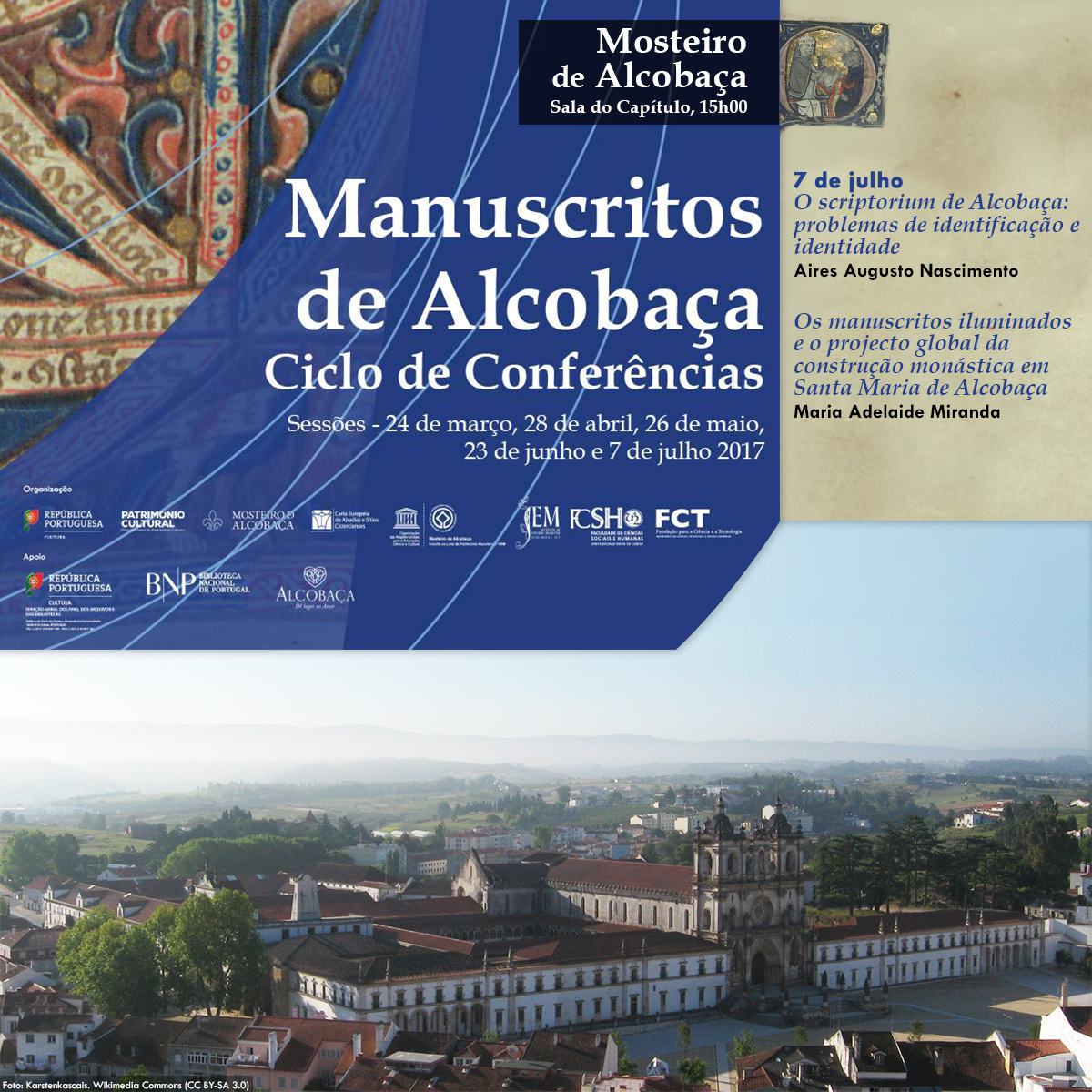Conference Cycle: Manuscritos de Alcobaça
5th Session
07.07.2017
Mosteiro de Alcobaça, Sala do Capítulo

The 5th session of the Conference Cycle: Manuscritos de Alcobaça will take place on July 7, and will feature lectures by Aires Augusto Nascimento and Maria Adelaide Miranda:
1st Conference – “Scriptorium de Alcobaça: identidade e identificação ou o processo do livro na instituição monástica”, Aires Augusto Nascimento
Having been asked to present a lecture on the subject, I intend to problematize the question in order to examine it in its original identity and in the process developed in a Cistercian community of the 12th century, a time of novelty in the monastic institution and in the relationship with the book. We will return to issues that have occupied us over the years and seek to review problems that have occupied us in the identification of book techniques to insist on the acquisition of categories of codicological analysis (descriptive and interpretive), with a firm methodology, for pertinent application to ensure well-founded conclusions. The book process in Alcobaça should take into account the history of its scriptorium, as a functional unit, in its temporal variables: “from the scriptorium without library to the library without scriptorium” (G. Cavallo); it demands attention to procedures, without forcing conclusions, in an attempt to unveil the cultural meaning of a book experience in a monastic community and its relations with the surrounding culture.
2nd Conference – “Os manuscritos iluminados e o projecto global da construção monástica em Santa Maria de Alcobaça”, by Maria Adelaide Miranda (Departamento de História da Arte e Instituto de Estudos Medievais da Faculdade de Ciências Sociais e Humanas da Universidade Nova de Lisboa)
The set of about 160 illuminated manuscripts produced in Santa Maria de Alcobaça during the last quarter of the 12th century and the first quarter of the 13th century is part of an overall monastic construction project. The monastery, founded by royal initiative in 1153, with work beginning in 1179, adopts the plan of Clairvaux III and is an example of a monumentality rarely built among us in the medieval period. It is a fundamental monument for the introduction of the Gothic style in Portugal and expresses in a remarkable way the Cistercian spirituality. We intend to reflect on the relationship between the Gothic architectural and sculptural construction, its evolution and the production of illuminated manuscripts that we have called Romanesque. The aim of this paper is to call into question this designation applied to all manuscripts based on the characterization of their ornamental and figurative elements.
